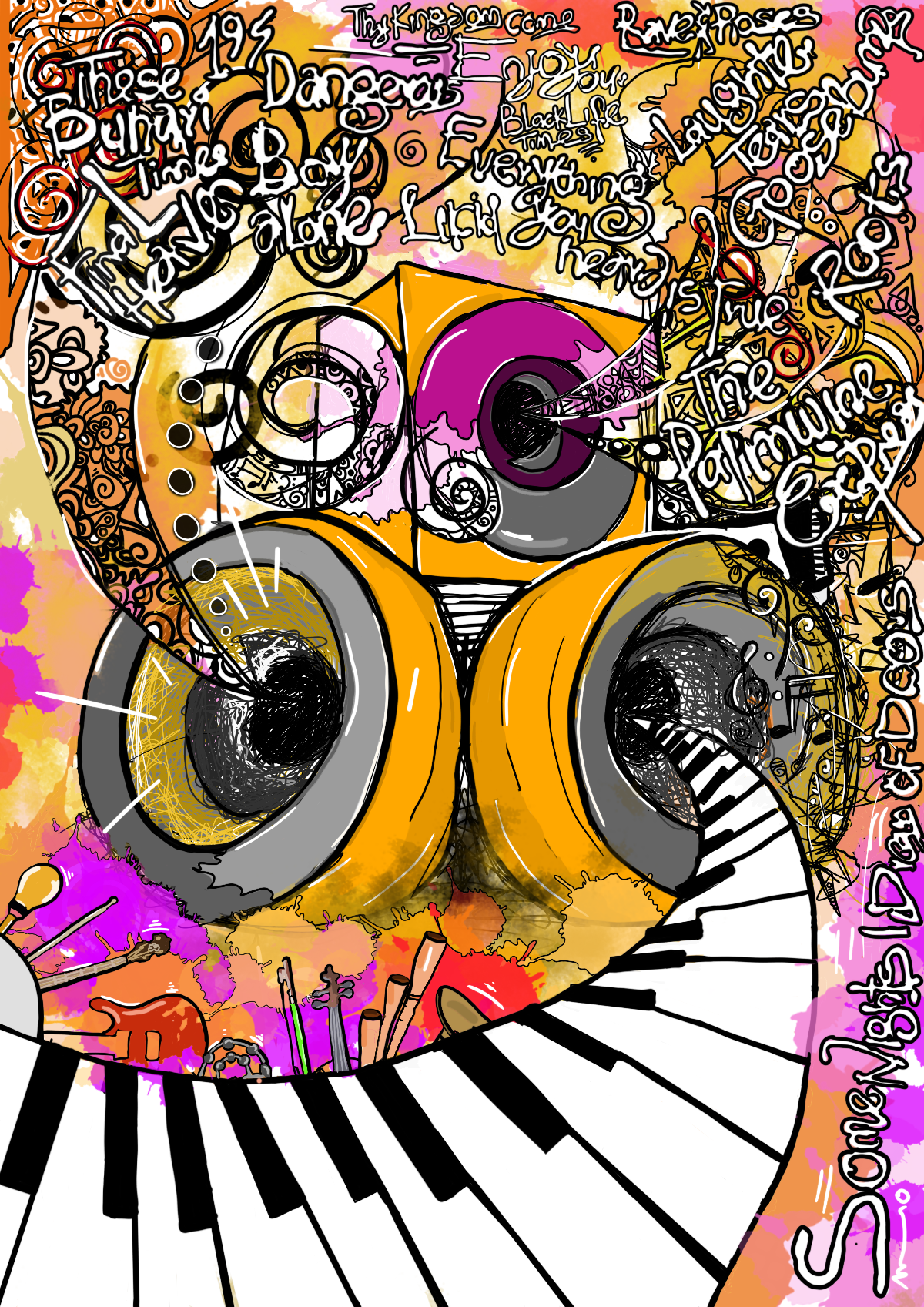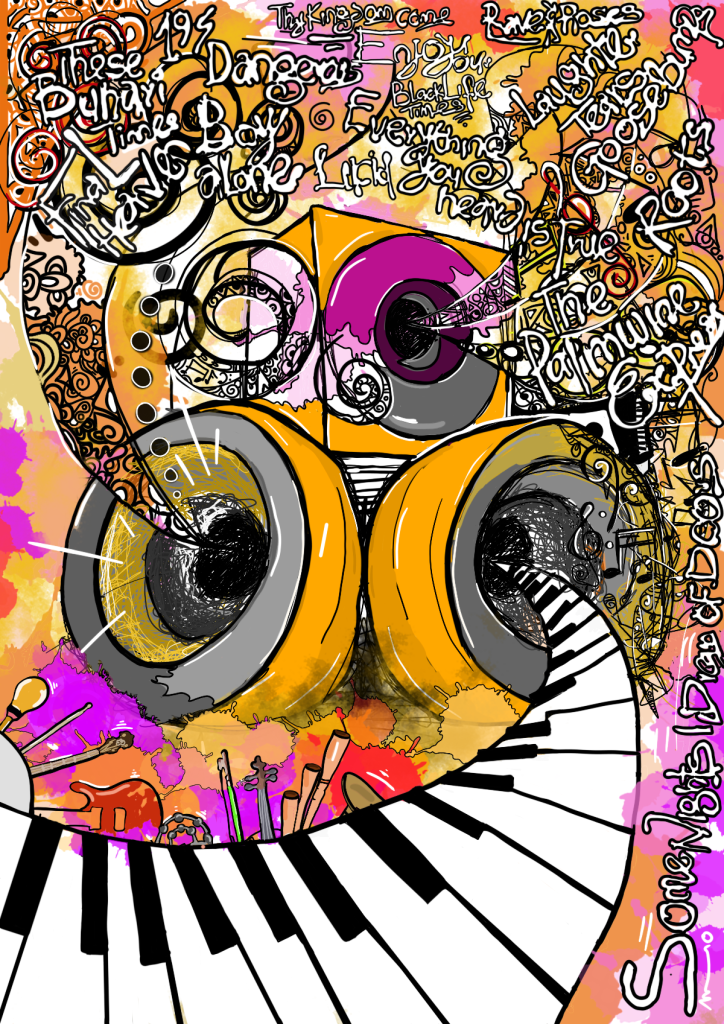
Illustration by Agala Silvanus Oyi
On the cover of American writer Francis Scott Fitzgerald’s classic novel ‘The Great Gatsby’ is a commissioned painting by Spanish painter Francis Cugat titled ‘Celestial Eyes’. It is a distinct sight that, as with any other significant book cover, is obtrusively memorable. This premise holds true for music, too.
A language in itself, music has as well adopted cover art as an inseparable element, so that it exists beyond sheer vinyl wrappers, or, as often rendered today, fancy icons on digital players. Cover art is, or ought to be, in solidarity with what a musical piece says.
Amidst the growing politics of visual representation in the Nigerian music industry today, inclusivity is imperative for cover art and its designers. While it can not be outrightly said that the art itself is a lost one, that its appreciation falls behind can not be brushed aside.
Whether as traditional or digital paintings, photographs or drawings, one thing the ideal cover art will do is tell a story. And when these stories are put together — subjective as each might be — they contribute to the depository of our collective cultural sensibilities per time. For this, it is no wonder that a connection to the cover art of a classic record just as much strengthens its status as one, where the cover art itself grows to become a relic, something of a cultural token.
Worked out from the cornucopia of cover artworks that have blessed the local industry, below is a carefully curated few of the best album covers out of the contemporary Nigerian music scene.

Photo Credit: GENIUS
Artist: Duks
15. Lady Donli, ‘Enjoy Your Life’ (2019).
Place your ears against the CRT TV in the artwork, and you will start to hear, albeit faintly, the music according to Lady Donli. Her Hausa-influenced fusion that includes Dancehall and Rock, accompanied by notable production credits and vocals from the Igbo Highlife duo, The Cavemen., births a sui generis cross-cultural, Afropolitan sound in this debut. And its cover is fitting: a dreadlocked Donli, face painted, assumes a blue, stiff three-piece garb reminiscent of the post-civil war Afro rock stars, against a rose-pink background. In a relaxed, reclining pose, and wearing an assured smile, the artist exhibits in one hand a white swan ornament, and remains the other behind the TV screening her album title.

Photo Credit: GENIUS
Artist: Dayo Cyrus
14. Fireboy, ‘Laughter, Tears & Goosebumps’ (2019).
On the cover of his debut album, Fireboy’s averted gaze provides a means of transport. The beach sand and sky bokeh set the mood. Then, in pristine white and brown, the subject holds an ineluctable presence in the frame, affected by what appears as sunset, so that the viewer, looking, is absorbed into his character, and made to contemplate, too, the variegated emotions its title promises.
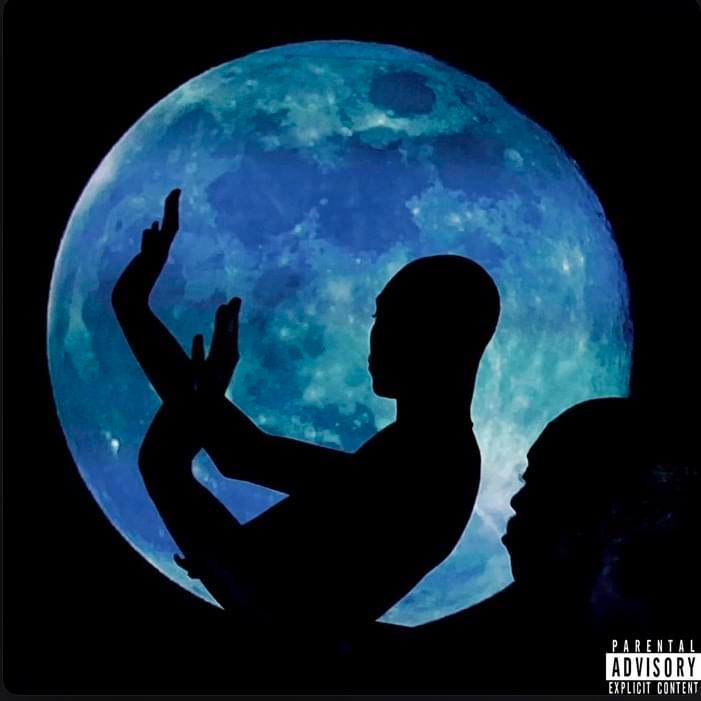
Photo Credit: GENIUS
Artist: Daniel Obasi
13. Odunsi(The Engine), ‘EVERYTHING YOU HEARD IS TRUE’ (2020).
A slouching silhouette of twenty-four-year-old Odunsi pairs with a feminine likeness in outer space against a bluish celestial body. In perspective, both figures are larger than life, and seemingly vibing — a snapshot of a release — so that the cover exudes an otherworldly feeling that is service to both sound and ethos, an emblem of the then-maturing, experimental artist.

Photo Credit: GENIUS
Artist: Yvan Fabing
12. Aṣa, ‘Lucid’ (2019).
True to the clarity of mind that she echoes on her fourth album, Aṣa opts for an obscure portrait photograph of herself, right hand supine over both eyes, for its cover artwork. It’s like ‘The Son of Man’, that Magritte painting; the viewer is invited, beyond what they might feel on the surface, to witness the sonic evisceration of the artist. The shot is all the more spectacular for how the brown ground absorbs parts of the subject — dreadlocks, dress — in a blur, and brings the iridescent glow on their skin to the fore.

Photo Credit: GENIUS
Artist: The Alchemist
11. Omah Lay, ‘Boy Alone’ (2022).
This minimalist masterpiece centres a miniature Omah Lay lying face upward on a purple carpet — the colour purple a probable allusion to the compassionate subtext of the purple heart. His head sits in his hands, while a white cup and dark shades lie beside him, beach-style. Then the pensive figure, tilted, lies parallel to the muted brushstrokes that texture the cover. All these together with the staffage of similarly tiny figures on the left, walking off, and the viewer’s distance away from the subject snippet the reflective and self-assured undertones of the record.

Photo Credit: GENIUS
Artist: Richie Igunma
10. Ayra Starr, ‘19 & Dangerous’ (2019).
Ayra Starr sits — manspreads — for the camera, hands clasped in between both legs, and does not smile. Art director Mariana Jaguite creates a composition that hints at the credo — the neo-Y2K slash Gen-Z religion — of the artist’s coming of age, the theme of this project. Meeting with this assertion, it is clear on the instant that Ayra has not come to play. And, looking back, we see that the signs were there from the get-go; the face of Afro Girl Pop had been in our faces the whole time.
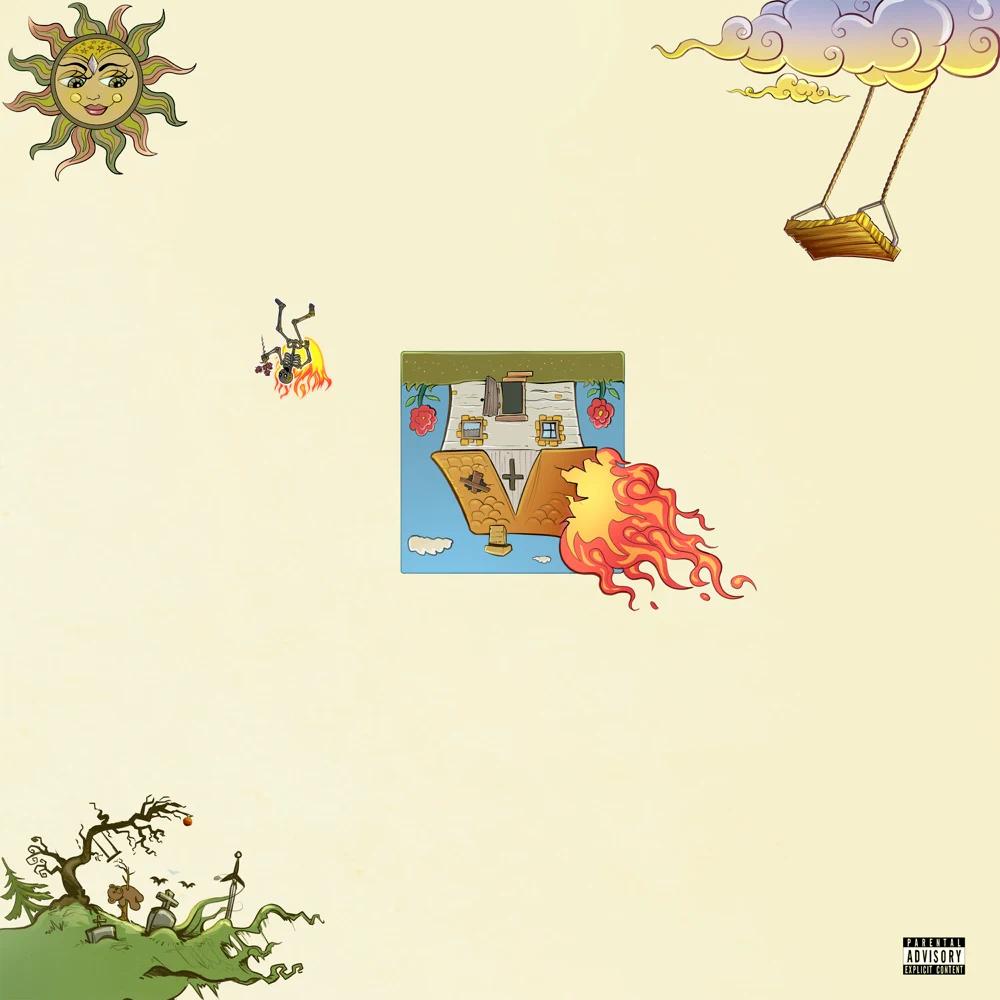
Photo Credit: GENIUS
Artist: Lanre William
9. Rema, ‘Rave & Roses’ (2022).
This cover design sees Rema continue his story from the ‘Rema’ debut. The swing that then announced his arrival is retained, hanging from a cloud in the top corner. Then, out of a house flipped on its roof, a skeleton on fire (Rema) dashes out holding a rose, heading for the sun — a woman, as reprised from his older releases. The burning house is a nod to the artist’s popular catchphrase, Anoda banga, and two tombstones are at the bottom left of the artwork for his father and brother as he sings in the album intro. The artwork indeed feels like an epic, with the long shots of its elements — including a sword, bats, and a signature teddy bear — understating its graveness.
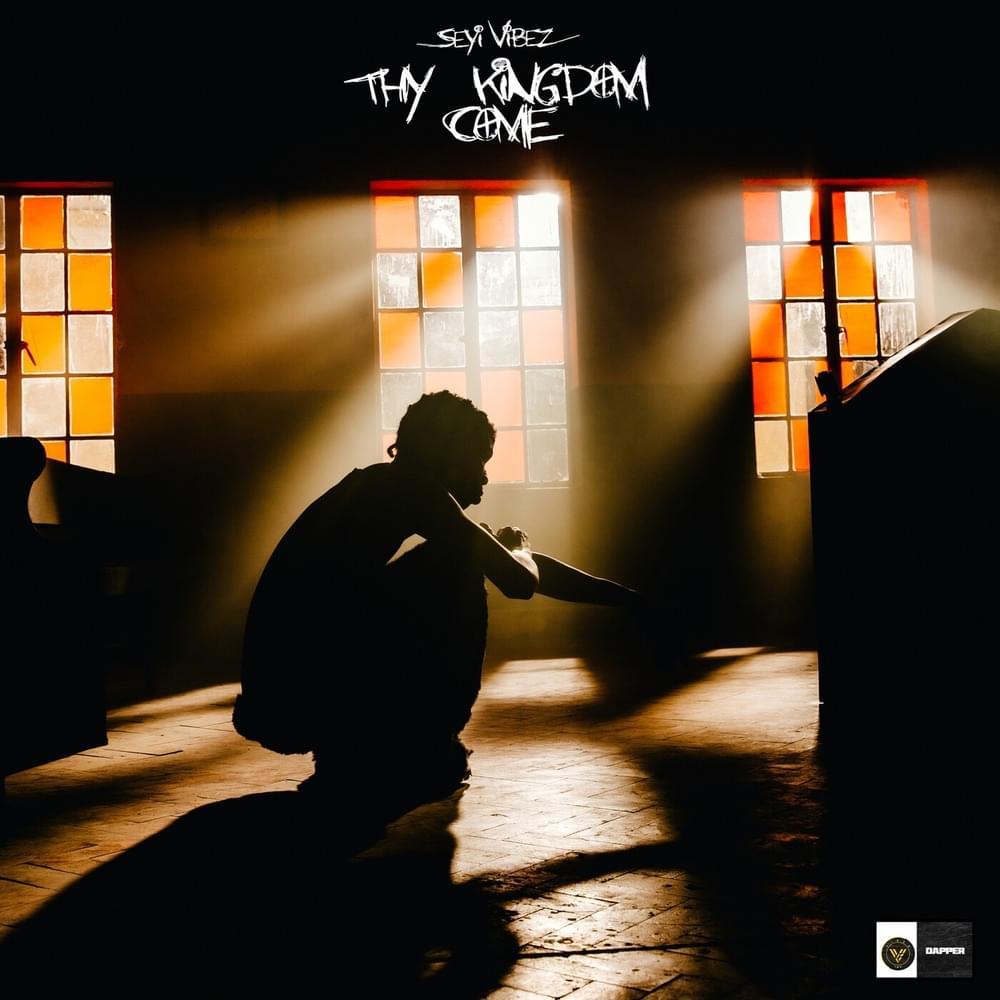
Photo Credit: GENIUS
Artist: Dayo Cyrus
8. Seyi Vibez, ‘Thy Kingdom Come’ (2023).
Seyi Vibez is just like every object in the room: still, shadowed, and symmetrical. He is captured in profile and toward the sanctuary of a church: a silhouette against the wistful light pouring through its stained-glass windows. The synthesis arouses a divine ambience. It is in this revelling, redemptive light that Loseyi then seems to crouch, or — better — hold a battle-ready pose. ‘Me I no fit wait till Jesus come/But I go vibe ‘til Thy Kingdom Come,’ he alludes in track seven of the album, giving utterance to his stance.
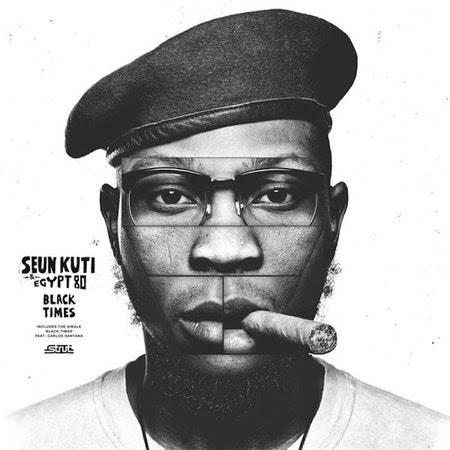
Photo Credit: Bandcamp
Artist: Lemi Ghariokwu
7. Seun Kuti And The Egypt 80, ‘Black Times’ (2018).
This Seun Kuti portrait shapeshifts between a photograph and a sculpture. The collage style is in fact, reminiscent of an earlier Ghariokwu work, the propitious design on the sleeve of Fela Kuti’s controversial 1976 number, ‘Zombie’. The image is statuesque: cold, impenetrable — adjectives that inform the physiognomy of military gravitas. Not to mention his cigar and beret, too — all in emphatic black and white. In the end, the cover design typifies an oppositional gaze, summoning the spirit one would expect of a Jazz-Afrobeats album.

Photo Credit: GENIUS
Artist: Musa Ganiyy
6. Show Dem Camp, ‘Clone Wars Vol. IV “These Buhari Times” (2019).
Taking from the popular epic franchise ‘Star Wars’ in its title, a third LP sees the rap duo vociferating their frustrations on a failed system in seasoned rap meters. Its cover photo is a satirical response to a statement the country’s President Buhari at the time had made at an international conference the year before, blaming the country’s economy on its young population’s resolve to “sit and do nothing”—‘lazy youths’ from here. The moniker is reclaimed on this cover, as in real life, and imagined in a tussle with the corrupt Nigerian polity (Honourable members), serving the premise of war in the album title.
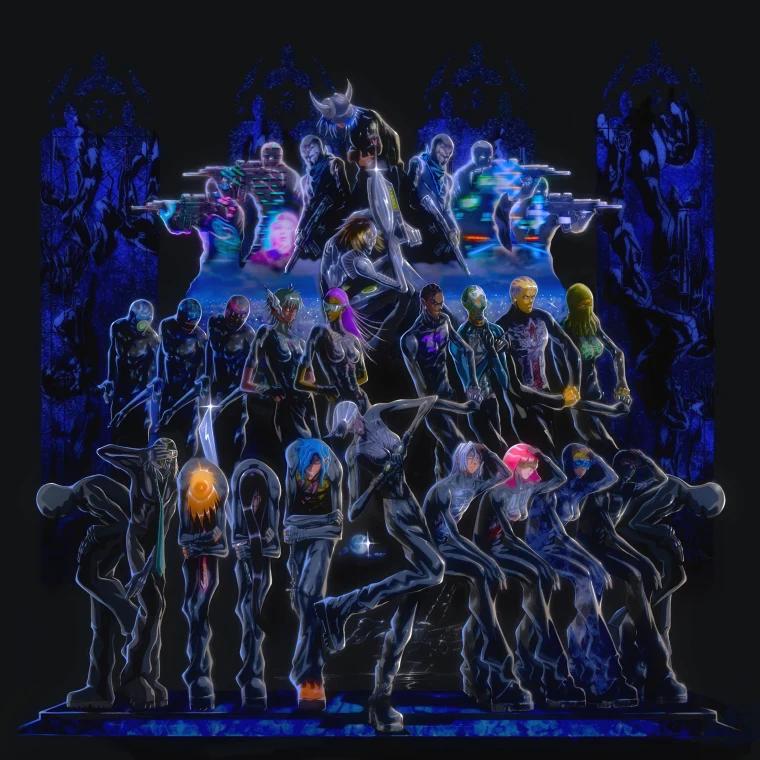
Photo Credit: GENIUS
Artist: Upson Martin
5. Cruel Santino, ‘Subaru Boys: FINAL HEAVEN’ (2022).
On the cover of this Cruel Santino album, Upson Martin paints characters from and in the artist’s speculative Subaru World, the music itself intended to isekai (transport) the listener into this simulation. The anime-and-video-game-influenced underwater concoction is thus represented in fitting aqua colours, each of the characters, including Santi himself (the figure with azure locks), unique from the other in outstanding detail. This symmetrical ensemble is an anti-crime faction on a mission, each highlighted against a dark, cosmic backdrop, the telescopic view of a galaxy an underscore.
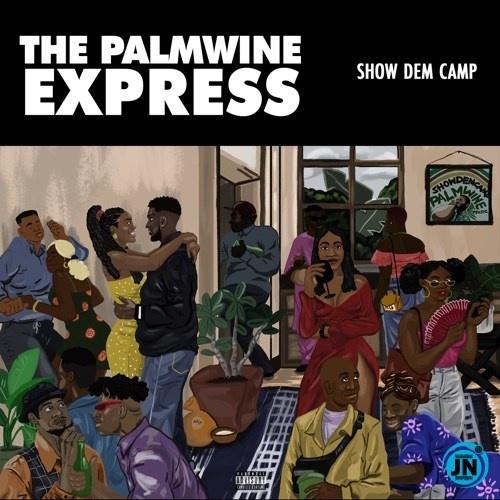
Photo Credit: Album Cover Bank
Artist: Musa Ganiyy
4. Show Dem Camp, ‘The Palmwine Express’ (2019).
This Musa Ganiyy painting feels like a film paused in running. Like a tableau vivant. The mise en scène portrays an Afrocentric utopia, packed and merry with plants and art and wine and young, bling Black figures. It is Black Modernism, calling the viewer into the free-spiritedness that wreaths the proto-Palmwine music. The peeking perennial in the window afar off, the potted plants, gourds and calabash in the room exhale breaths of fresh air, giving the painting an overall bucolic feel. There is no surprise at all when this seminal record starts spinning.
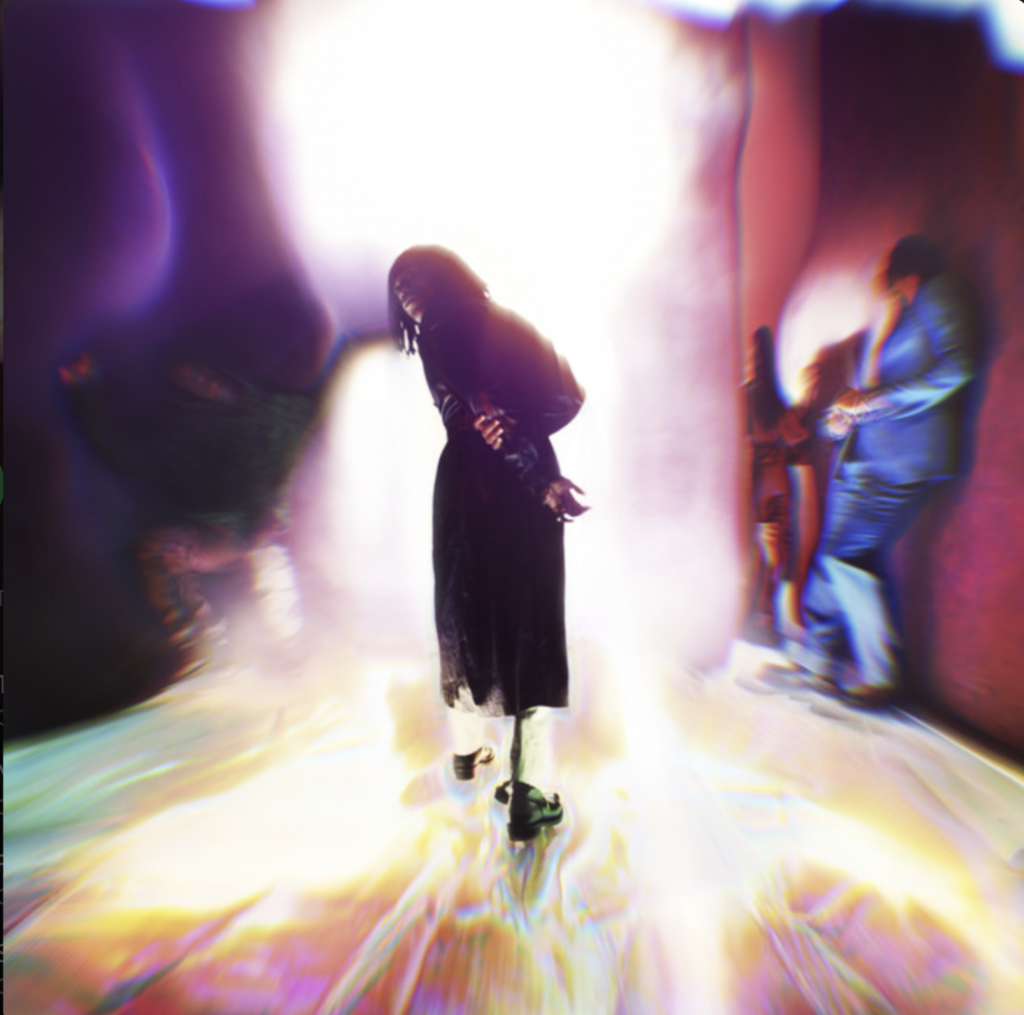
Photo Credit: Album Cover Bank
Artist: Bolade Banjo
3. Obongjayar, ‘Some Nights I Dream of Doors’ (2022).
This psychedelic cover design is, arguably, a perfect translation of the album here. Obongjayar, flanked by a gigantic face on one side and two figures on the other, is seen in character, clothed in wizard regalia with his arms locked behind him. The record itself is introspective, face-to-face with internal conflicts as well as socio-political ills — hence, his reflective pose. In frame, the subject appears to be strolling in a foyer that appears augmented like a still out of a David Lynch film, or a dream state; a sojourner into doors of memories locked in time.
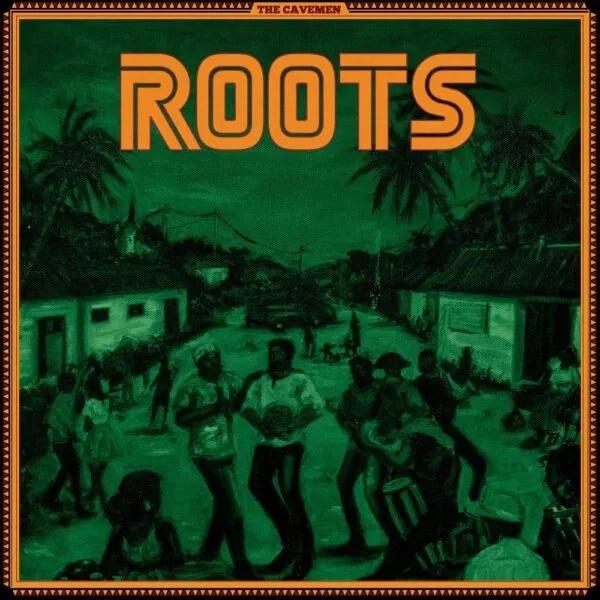
Photo Credit: Album Cover Bank
Artist: Funto Coker
2. The Cavemen., ‘ROOTS’ (2020).
For an Igbo Highlife album, Funto Coker does this just right. There is a photo in an elaborate picture frame. Men, women and children are in a village piazza, drumming, dancing, drinking; no occasion per se. The wooden frame separates the painting from reality, for nostalgic effect. The viewer will then do their looking through a green, retrograde lens that rehashes the joie de vivre of 60’s and 70’s Nigeria — a time well soaked in Highlife tunes. If observed from the bottom-up, the scenic view terminates in a horizon lined by rural architecture, above which, in the sky, the album title is emboldened, altogether leaving the viewer with a longing for experience.

Photo Credit: Album Cover Bank
Artist: Lakin Ogunbanwo
1. Tems, ‘For Broken Ears’ (2020).
Ogunbanwo is famed for making enigmatic edifices of the human body. In the photograph above his subject is clothed, braided, and poses in quasi-rückenfigur against a stark, graded, orange background — the resulting shot a pastel drawing on paper. It is a quiet photo; think: introspection, healing. And with its subject turned toward the key light, the viewer is thrust into the vision of an image they can not see. It is as though Tems, in the spirit of that figurative Funkadelic foursome hoisting an ‘R&B’- decorated flag on the sleeve of their 1978 album, ‘One Nation Under a Groove’, is saying of her idiosyncratic debut that, Yes, this is the kind of music I want to make.
And so begs the question: what makes cover art ‘remarkable’? It should first be said that an image can not exist outside its function. That is, good cover art that does not intrigue the viewer does not exist. It is, after all, its original motive: to make the audience wonder.
Next to this is an equally influential but exclusive list of sentiments that includes thematic consistency, technique, and the appreciation and cultural significance of the album itself, so much that its cover art becomes almost inseparable from its glory.
Each of the works highlighted above embody their own way of seeing, and so does the viewer, but beyond this, what a listicle of this sort aims at, particularly in local conversations, is the decentralisation of the music video and eye-candy covers in our visual culture — a prompt for more conscious contributions to our design history, one that, in retrospect, would be considered a temporal reflection of our social and artistic expressions.



